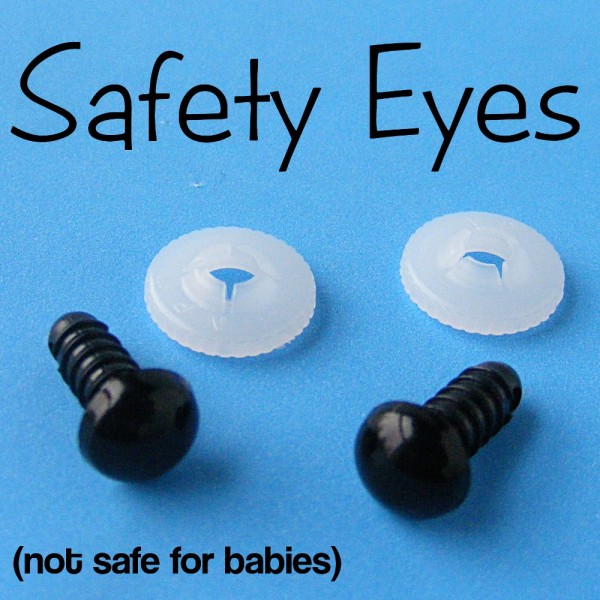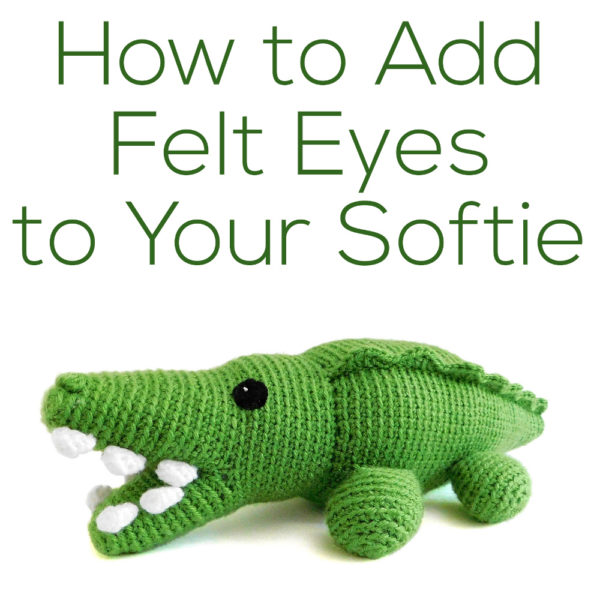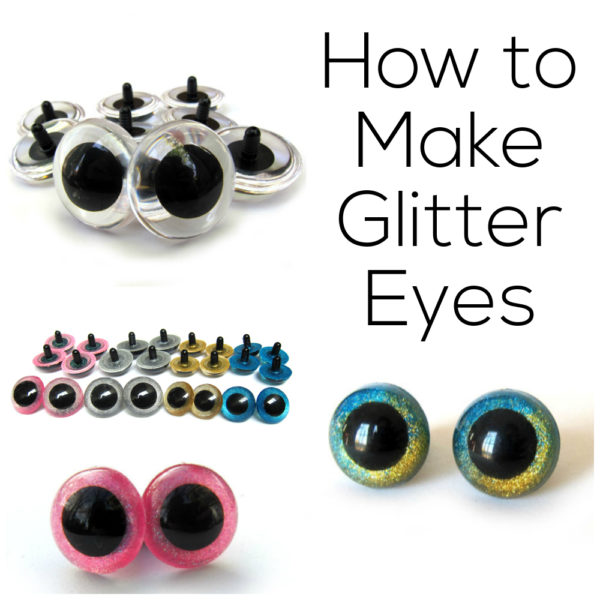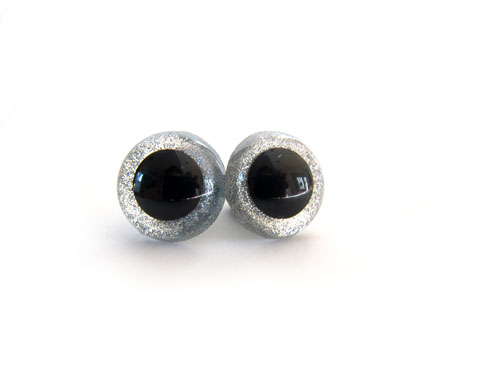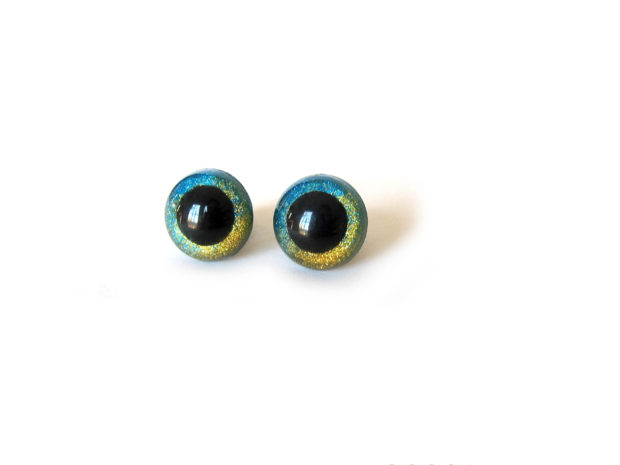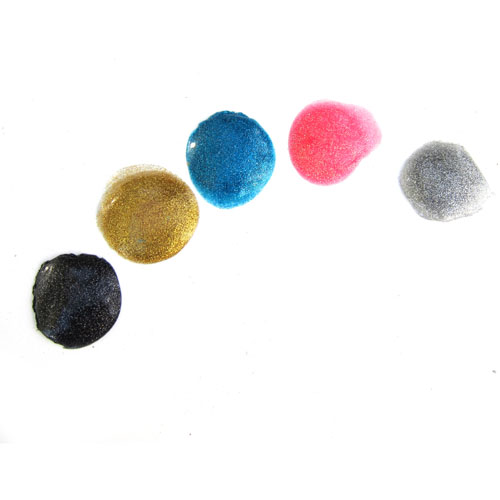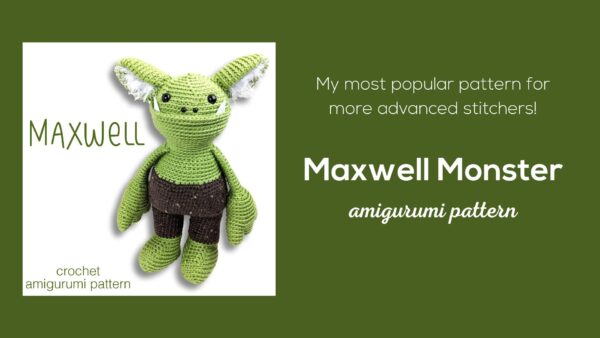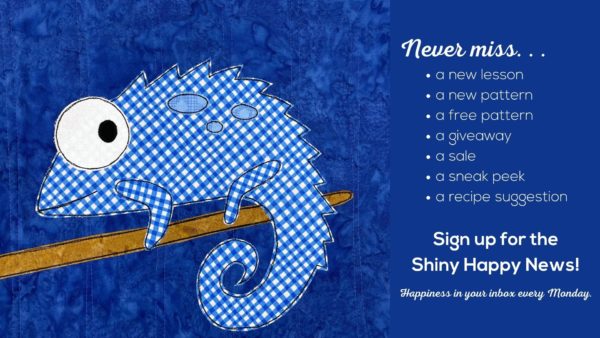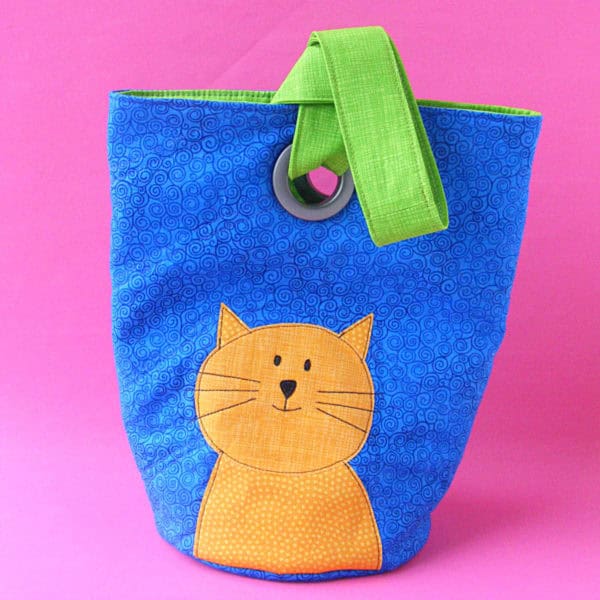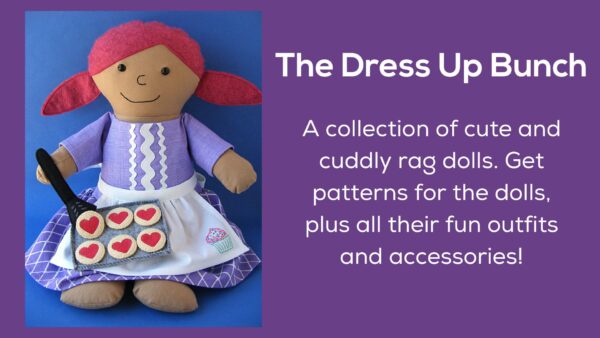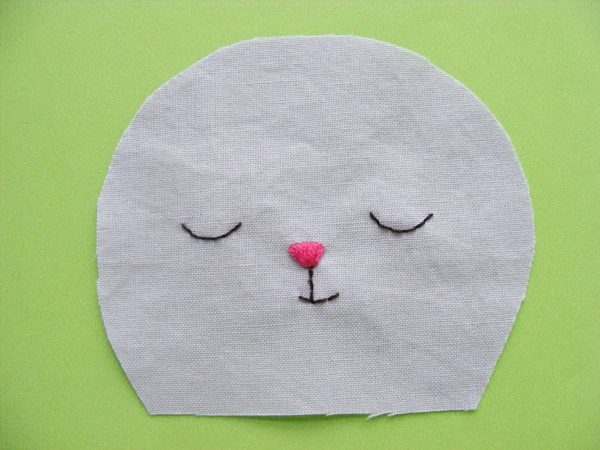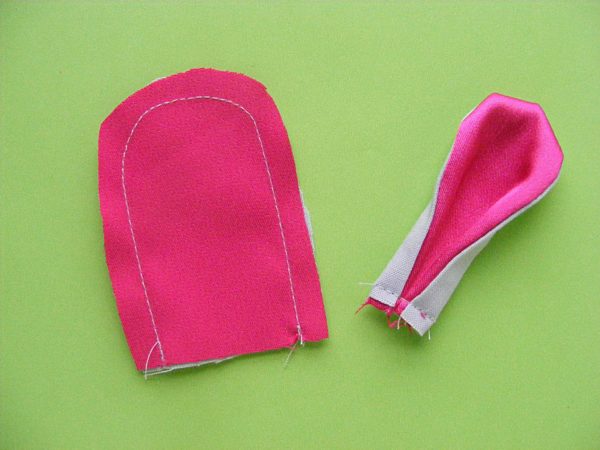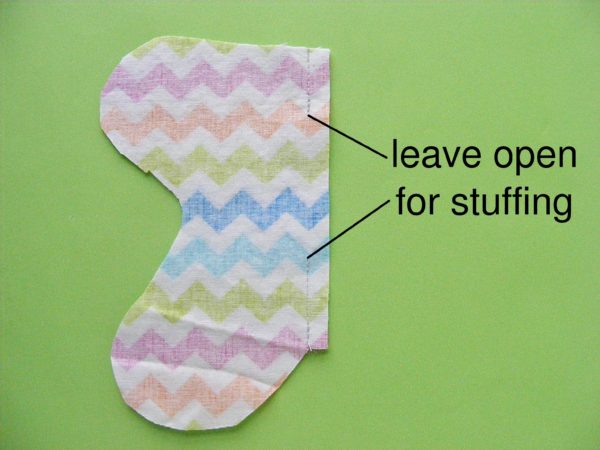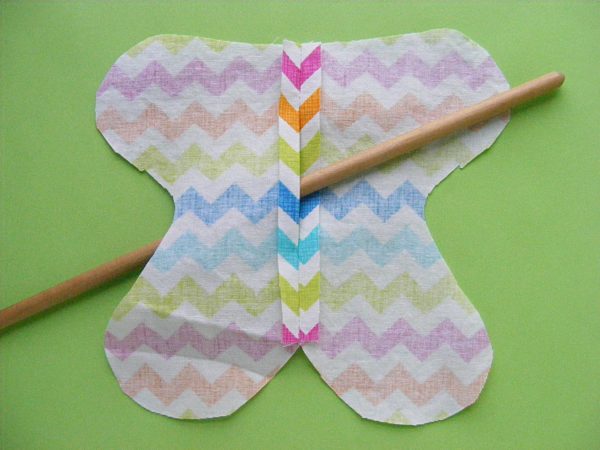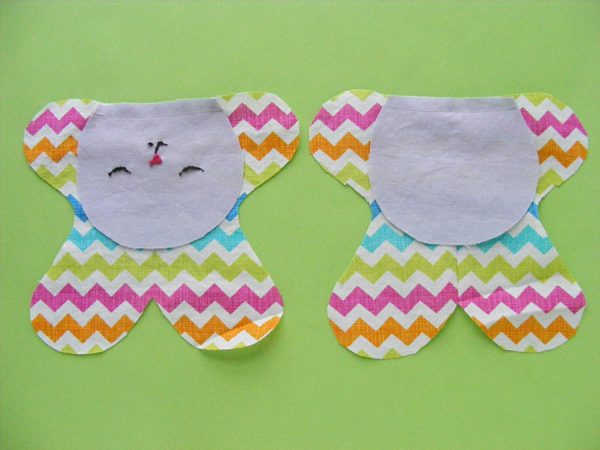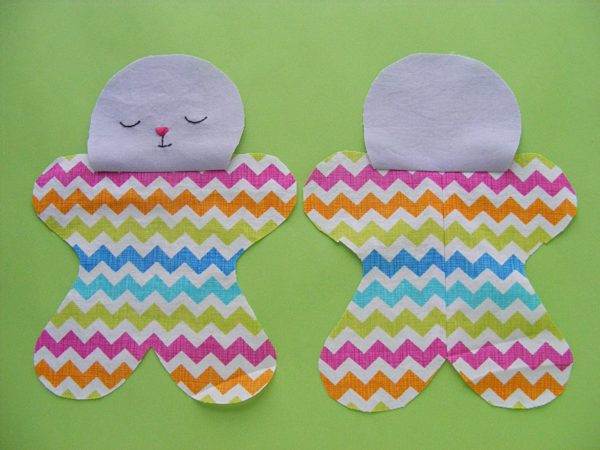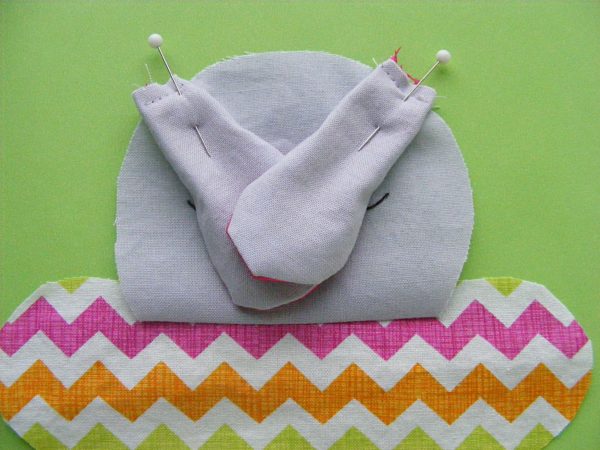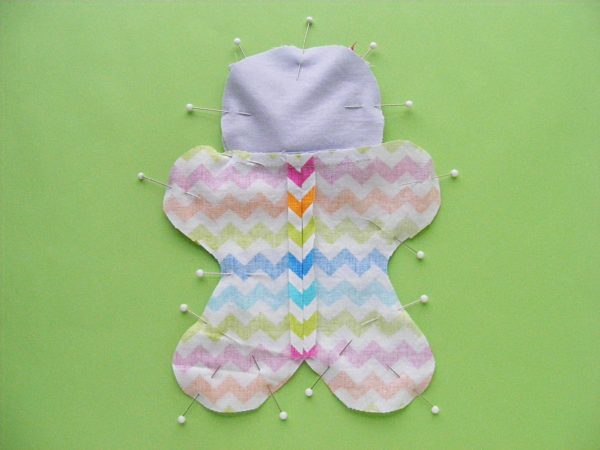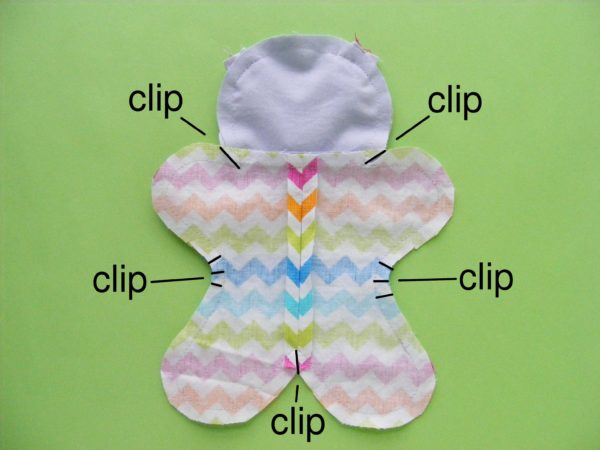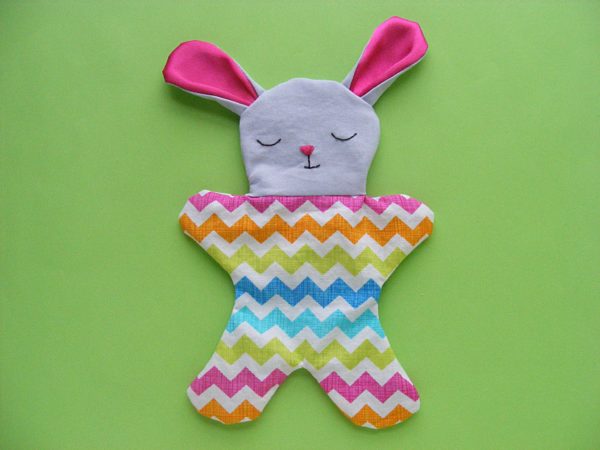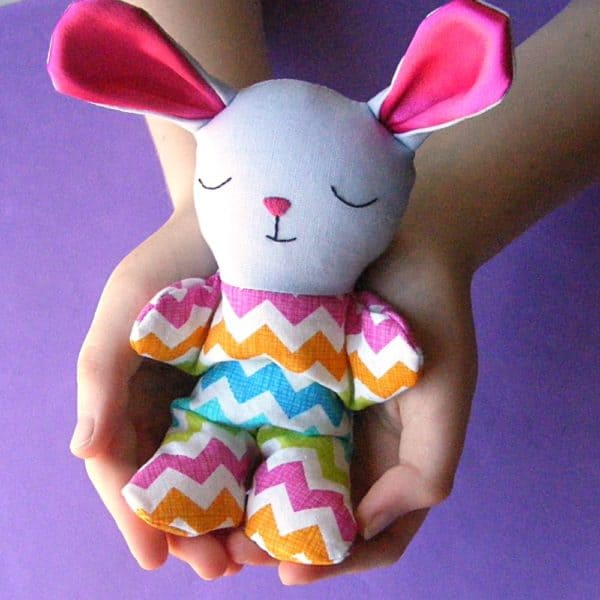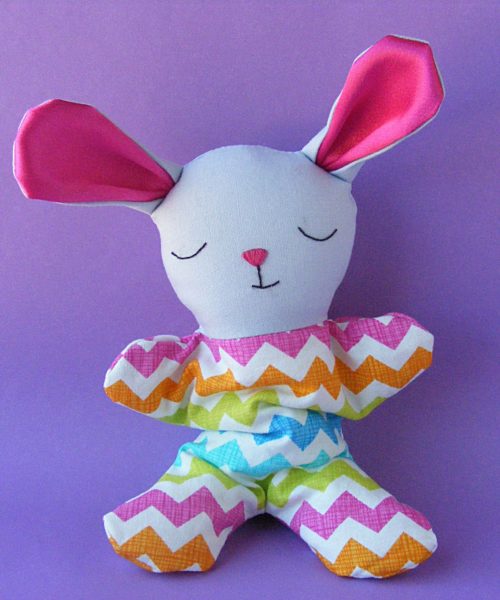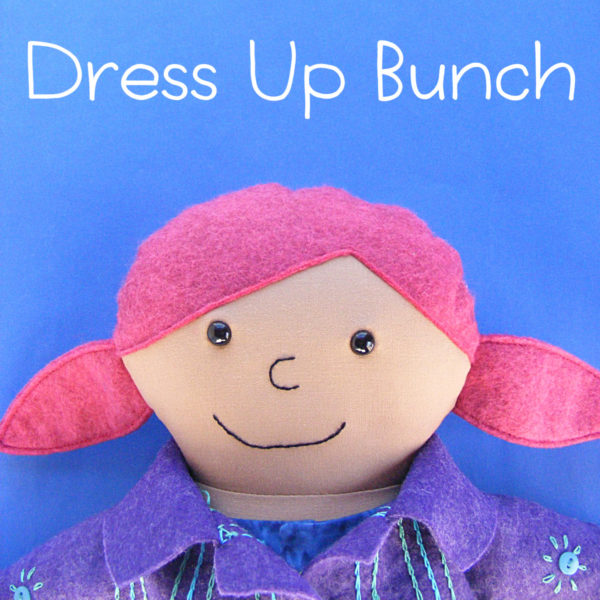Use this simple stocking pattern with whatever embellishment you choose. Or none at all! The lined construction is easy enough for beginners, and it works with any quilt, appliqué or embroidery pattern.
Throughout most of the instructions I’m using this free Santa appliqué pattern, but you can use any decoration you like. Here’s the exact same stocking made with three different cats from this quilt pattern.
Here’s how to make the stocking. . .
Step 1
Download the stocking pattern here. The pattern pieces print on two pages. Overlap them so that the heart and the edges of the stocking line up and tape them together. There’s more info on joining pattern pieces like this here.
Step 2
Cut two rectangles 9″ wide and 19″ tall from your main fabric, your lining fabric, and 100% cotton batting. My favorite batting is Warm & Natural.
Step 3
Layer one main fabric rectangle with one batting rectangle and quilt the layers together.
I’m showing this from the back so you can really see the quilting. Any design will do – it just needs to hold the two layers together.
Repeat with the other main fabric and batting rectangles so you have two pieces.
Step 4
Layer the two quilted layers and the two lining layers right sides together and cut four stocking pieces – two main and two lining.
Step 5
Decorate the front of the stocking however you like. I used my favorite appliqué with fusible adhesive method. You can see how I do that in this video.
If you’re doing floating heads (like the cats) no adjustment is needed. Just print the pieces out at whatever size you like.
If you’re doing a head that’s cropped off at the bottom (like the Santa) you’ll need to make some adjustments because the bottom of the stocking slants.
On the original Santa appliqué pattern, the beard is cropped off at the horizontal dotted line. For the stocking I left a lot of fusible adhesive below that dotted line and fused the whole thing to the fabric. That extra fabric will accommodate the slant at the bottom of the stocking.
Arrange the pieces on the front of the stocking. Let that extra beard fabric overhang the bottom edge of the stocking.
When you’re happy with the arrangement, fuse it down, stitch around the edges, and then trim off the extra beard. You can use this same technique for any animal bodies that you want to use on the stocking from any of my quilt patterns.
Step 6
Now time to start putting the stocking together! Layer the lining pieces right sides together and sew around the edges using 1/4 inch seam allowance.
Leave the stocking top open, and also a place on the back seam for turning. The turning hole needs to be big enough to fit your hand through it.
Step 7
Layer the main stocking pieces right sides together and sew them around the edge using 1/4 inch seam allowance – just like the lining. Leave the top open, but do NOT leave a turning opening.
Clip the seam allowance in the concave curve of both the main stocking and the lining. Watch this video for the how and why of curve clipping.
Step 8
Turn the lining right side out. Slip it inside the stocking (the stocking should still be inside out) and line up the side seams.
Sew the stocking to the lining all the way around the top edge using 1/4 inch seam allowance.
Step 9
Turn the stocking right side out. This can be confusing if you’ve never turned a lined thing right side out before.
Start by pulling the lining out of the stocking. Then reach into the turning opening, grab the toe of the stocking, and pull the stocking right side out through that opening.
Keep pulling and the lining will start coming through too – right side out. Turn the lining completely right side out. Sew up the opening using ladder stitch, and tuck the lining down into the stocking.
Step 10
You have two options for the top edge. You can work the lining and the stocking so that the seam between them is right at the top edge of the stocking. You only see the lining if you peek inside. Press with lots of steam to set the fold.
(If you want to add a hanging loop like on this cat stocking, cut a loop of ribbon and slip it between the stocking and lining layers before you sew them together in Step 8. Be sure to catch the ends of the ribbon in the stitching as you sew those layers together.)
If you want a little bit of the lining to peek out of the top, leave the batting inside standing up (don’t fold it down) and use that as a guide to fold the lining down over it. Press with plenty of steam.
Finished!
Here’s a quick list of links to all the patterns I used. . .
The free Santa appliqué pattern is here. I printed it at 60% to fit on the stocking.
The Cats quilt pattern is here. I printed the three cats I used at 80%.
The free alphabet pattern is here. I printed it at 90%. You might need to go much smaller for a significantly longer name, or arrange the letters the long way.
You could make the stocking even simpler by just using a really fun Christmas fabric – no fancification needed! Try embroidering a design instead of using appliqué. Or use a couple of leftover pieced quilt blocks for the main fabric.
Play around with this pattern! It’s completely open-ended so you can do just about anything with it!

Here are several free patterns that work with my basic 10-inch applique squares – no resizing needed!
- Make a Wall Hanging with a Wonky Churn Dash Frame
- Trick or Treat Bag (medium tote bag)
- Quilted Tablet Cover
- How to Turn Any Quilt Block into a Pillow
- Fast and Easy Placemats
- Fancy Felt Frame
- Receiving Blanket
Here are several free patterns that work with just some simple resizing. This post about making coasters has info about resizing an applique pattern that can be applied to any of these projects.
- Free Bib Pattern
- Simple Christmas Stocking
- Mini Bunny Tote Bag
- Turn Any Quilt Block Patterns into Cute Coasters
- Cozy Bear Coasters
- The Big Bag (applique on the pocket)
- Cloth Book for Babies
Return to the main Let’s Make a Quilt Table of Contents.
Happy sewing!




















